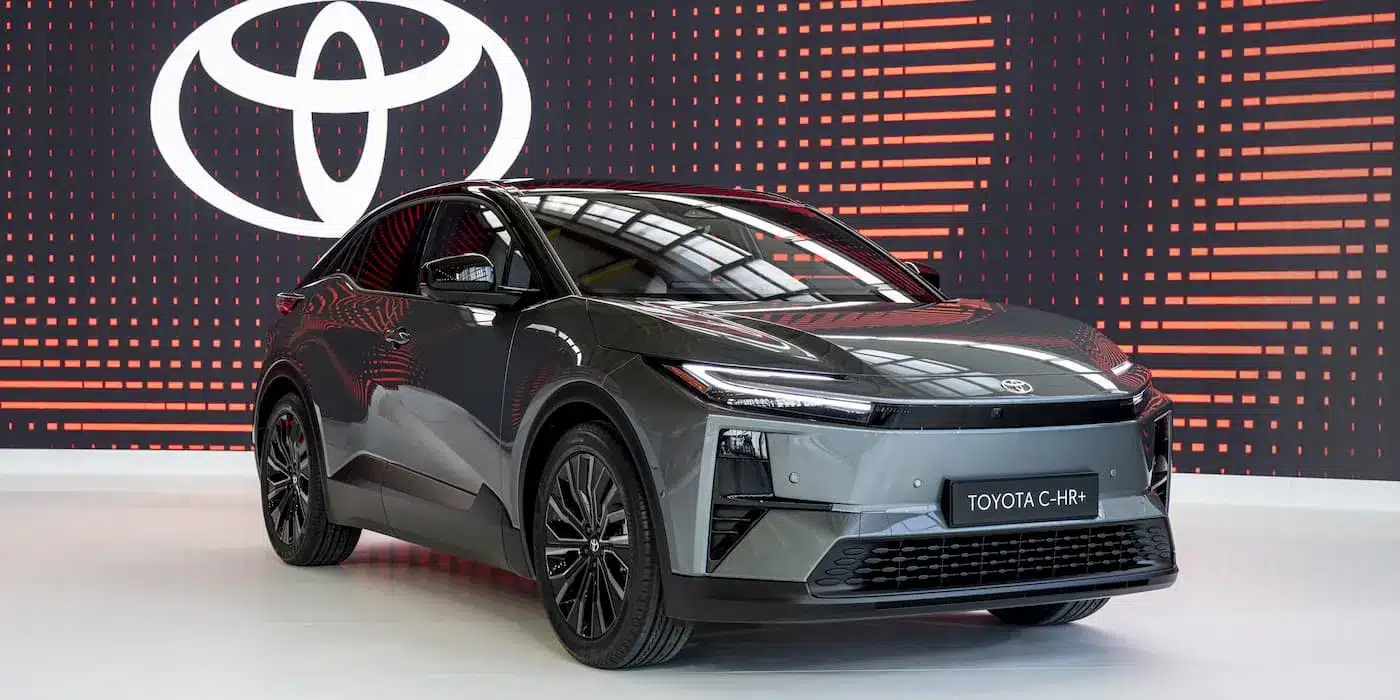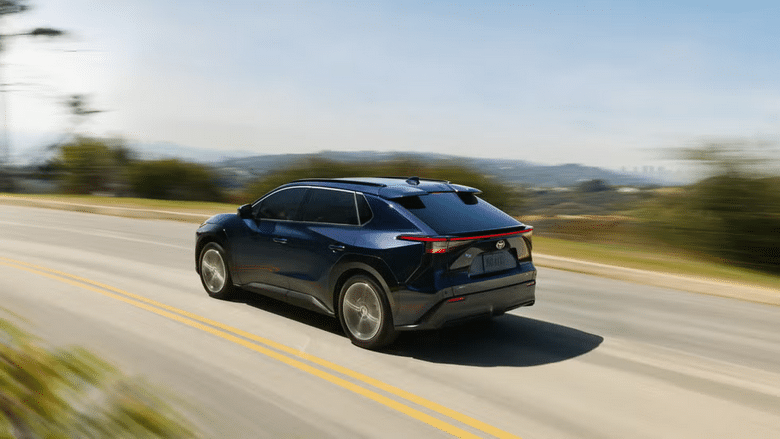Toyota Finally Adding a New BEV for America in 2026
Toyota is finally getting its act together for its battery electric vehicles (BEVs) in the US market. After a brief disappearance from U.S. roads, the Toyota C-HR is making a dramatic return—this time, fully electric. While the C-HR EV (sold as the C-HR+ in Europe since 2023) isn’t entirely new globally, it’s a fresh entry for American buyers, and a bold one at that. Slated to arrive by 2026, the electrified C-HR adds a long-overdue second all-electric option to Toyota’s U.S. lineup, joining the bZ4X.
Built on Toyota’s dedicated e-TNGA platform, the C-HR EV brings more than just a new powertrain—it brings power. With a dual-motor, all-wheel-drive setup producing 338 horsepower, Toyota is clearly aiming for fun. A sub-5-second 0–60 mph time puts it well ahead of most compact crossovers and might even turn the heads of performance hatchback fans.
Range won’t be an afterthought either. Toyota claims the 74.7 kWh battery will deliver up to 290 miles of driving on a full charge. When it’s time to plug in, the standard North American Charging Standard (NACS) port supports 10%–80% DC fast charging in just 30 minutes. Battery preconditioning and adjustable regenerative braking (via steering wheel paddles) come standard, underscoring Toyota’s growing sophistication in EV engineering.

Trim options will be simple: SE and XSE. The SE includes a 14-inch infotainment screen, heated front seats and steering wheel, dual wireless chargers, and USB-C ports. The XSE steps things up with 20-inch wheels, faux suede-trimmed seats, a digital rearview mirror, and driver memory features.
Pricing isn’t official yet, but early estimates suggest the C-HR EV will start around $42,000, placing it just above the current bZ4X. Still, with hot-hatch power in a compact package, it may appeal to buyers looking for performance and practicality in one stylish EV.
With the return of a familiar name and a dramatically new identity, the electric C-HR is shaping up to be more than just a footnote in Toyota’s EV strategy—it might just be the most exciting one yet.
Toyota’s bZ4X Electric SUV Gets a New Name and a Big Upgrade for 2026
In a move that signals a fresh chapter for its electric ambitions, Toyota has officially renamed its only fully electric vehicle. The bZ4X, which has served as Toyota’s sole battery electric offering in the U.S., will now simply be called the Toyota bZ. Along with the streamlined name comes a comprehensive 2026 update designed to elevate performance, range, and everyday usability.

Dropping the “4X” may seem minor, but the new name better aligns with Toyota’s broader Beyond Zero (bZ) branding strategy. It’s a cleaner identity for a vehicle that’s steadily evolving from cautious experiment to credible contender in the electric SUV space. Though Toyota hasn’t officially confirmed whether “bZ” should be capitalized, the new naming feels more intentional and premium—fitting for a model that aims to rewrite its narrative.
The most significant change is under the skin. Toyota is now offering two battery sizes across six configurations. Buyers can choose between a 57.7-kWh battery or a larger 74.7-kWh pack, the latter enabling up to 314 miles of range (XLE FWD trim). On the lower end, the smaller battery nets 236 miles—a still-respectable figure for city commuters or lighter-duty drivers.
Performance also gets a jolt. A new 167-kW motor delivers 221 hp in front-wheel-drive trims, while all-wheel-drive versions leap to 338 hp thanks to dual motors (167 kW front, 87 kW rear). With 0–60 mph times now dipping to 4.9 seconds, the bZ finally edges into competition with electric rivals like the Hyundai Ioniq 5 and Volkswagen ID.4.
One of the biggest criticisms of the outgoing bZ4X was its lagging charging speed. Toyota seems to have heard that loud and clear. All 2026 bZ models will now come with North American Charging Standard (NACS) ports and a battery preconditioning system, significantly improving DC fast-charging capabilities—now capable of reaching 80% in about 30 minutes under optimal conditions.
Inside, comfort and convenience also get a facelift. A 14-inch touchscreen is now standard across the board, along with two wireless charging pads, two USB-C ports, and upgraded climate management thanks to a heat pump. Heated front seats and a heated steering wheel are also now standard.
For those seeking even more creature comforts, the Limited trim adds an 8-way power driver’s seat, driver’s seat memory, and a digital rearview mirror.
Off-road enthusiasts and snowbelt dwellers will appreciate Toyota’s new Grip Control feature. This traction system actively adjusts power distribution between motors based on surface grip and road conditions—enhancing confidence on loose gravel, wet pavement, or uneven terrain.
With a cleaner name, longer range, better performance, and smarter features, the 2026 Toyota bZ represents a major step forward. While it may have started life as a conservative EV, this updated version looks to be a far more compelling entry in the electric SUV market. Toyota may have arrived late to the BEV game, but it’s clearly not content with staying on the sidelines.
Why Toyota Doubled Down on Hybrids in the U.S. Instead of Going All-In on EVs
While automakers across the globe race toward an all-electric future, Toyota is taking a different approach—especially in the U.S. market. Rather than focusing entirely on battery electric vehicles (BEVs), Toyota continues to prioritize hybrids and plug-in hybrids. It’s a strategy that’s raised eyebrows, but it’s also proving to be increasingly pragmatic.
In the U.S., EV adoption is growing, but it’s not without its hurdles. Limited charging infrastructure, range anxiety, cold-weather performance concerns, and higher up-front costs are all slowing BEV momentum—particularly outside of urban centers. Toyota sees this reality and is betting that American buyers still want a middle ground between internal combustion engines and fully electric cars. That’s where hybrids come in.
Toyota’s hybrid dominance is no accident. The brand pioneered the modern hybrid with the Prius and has since expanded the technology across its lineup. In 2024 alone, hybrid versions of the Camry, RAV4, Highlander, and Tundra have continued to outsell their gas-only counterparts—and in some cases, even outpace full-EV competitors.
More Mileage from Fewer Batteries
Toyota’s hybrid strategy also aligns with global resource concerns. BEVs require significantly more raw materials like lithium and cobalt than hybrids. By producing five or six hybrids using the same battery resources required for one BEV, Toyota argues it can reduce more emissions, more quickly, by putting more electrified vehicles on the road—especially in regions not yet ready for full EV adoption.
Toyota is also expanding its plug-in hybrid offerings, like the RAV4 Prime and the upcoming Land Cruiser Se. These models give drivers limited electric-only range for short commutes, but still offer the flexibility of gas engines for long trips—making them ideal for America’s vast, varied driving needs.
The Hybrid Problem
Hybrids have been selling very well for the last few years, as many drivers are not ready to go full electric for a variety of reasons.
Auto data firm Motor Intelligence reported via CNBC that more than 3.2 million electrified vehicles were sold last year, including 1.9 million hybrid vehicles, including plug-in models, and 1.3 million all-electric models.
Sales of all-electric vehicles and hybrid models reached 20% of new car and truck sales in the U.S. for the first time last year. Internal combustion engine (ICE) vehicles declined to 79.8%, falling under 80% for the first time in modern automotive history.
The problem with Toyota’s hybrids and other hybrids, is that their shelf life is limited. As more EV charging gets installed quickly around the US, more drivers are realizing they no longer need the hybrid gas engine backup and are going full BEV. Whether Toyota can adjust quickly enough to this exciting new all-electric future in America remains to be seen.

Electric Vehicle Marketing Consultant, Writer and Editor. Publisher EVinfo.net.
Services